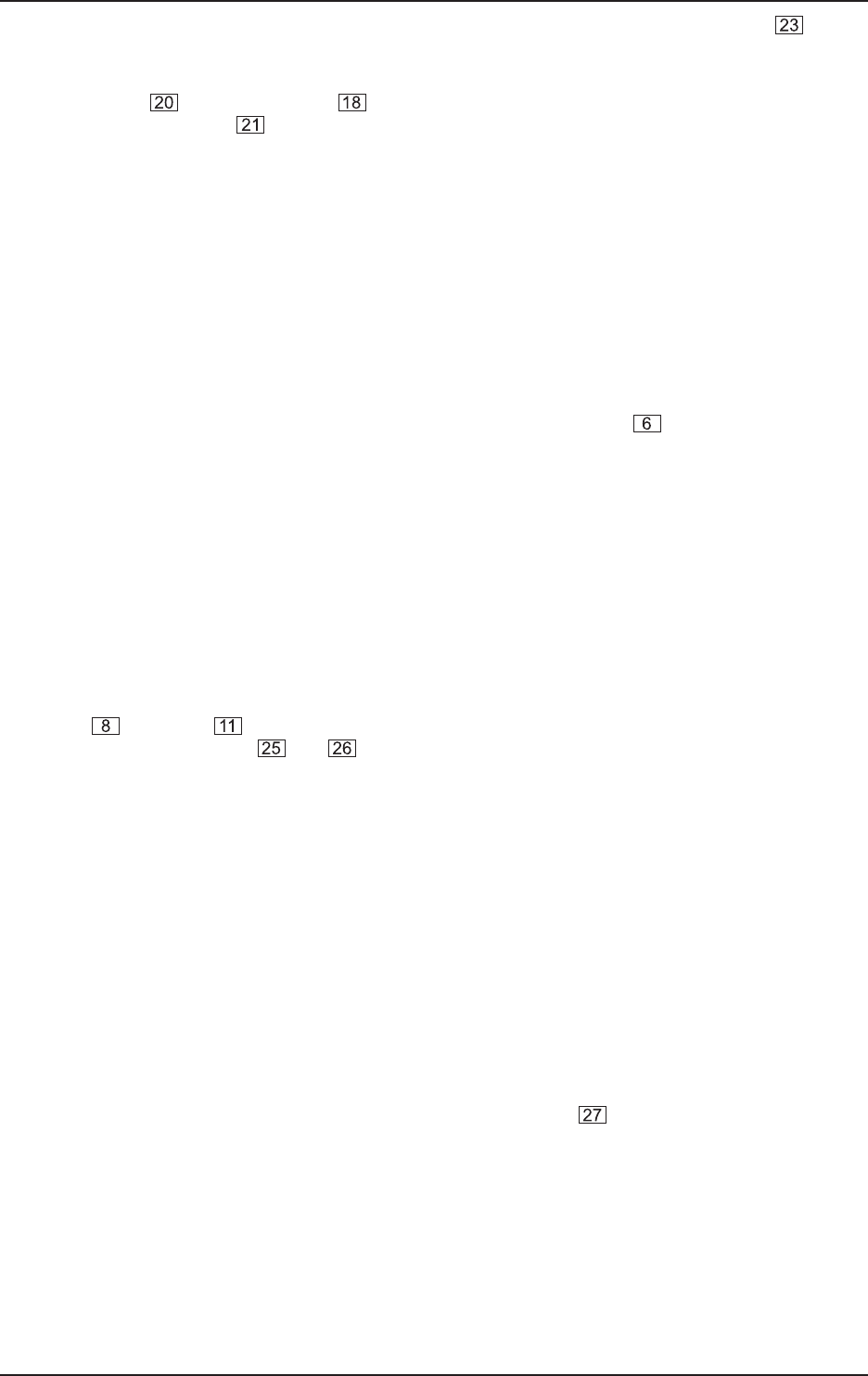
11
EURODESK MX3282A
Level to the group and main left and right busses is ultimately determined by the channel fader . This is
designed to give a smooth logarithmic taper of a type more usually associated with megabuck consoles. The
low level performance particularly is far smoother than that of a normal budget fader.
The MUTE button
, like that for SOLO is ergonomically placed immediately above the channel fader,
and has an associated LED for excellent visual status indication of this much-used feature. Engaging
mute is equivalent to setting a fader level of minus infinity. It follows that pre-fader aux sends are unaffected by
application of mute.
4. STEREO INPUT CHANNELS
Each stereo channel comes with two line level inputs on 1/4" jacks, for left and right signals. When only the left
input is connected, the channel operates in mono.
+ This feature is disabled, if the inputs and outputs of the EURODESK are wired permanently to
a patchbay (see section 9: PATCHFIELD).
Channel input sensitivity is variable between -20 and +20 dB by adjusting GAIN , enabling a perfect match
with all common line-level sources including multitrack tape outputs, MIDI and other electronic instruments
and effects units, all of which are normally designed to operate at either +4 dBu or -10 dBV.
4.1 Input Level Setting
This is exactly as for a mono channel (see section 3.1).
4.2 Equalizer
All stereo input channels are fitted with four-band, fixed-frequency EQ. Bands 1 and 4 are shelving, while bands
2 and 3 have a peaking response, with their Q set at 2 octaves.
The upper and lower shelving controls have their turnover frequencies fixed at 12 kHz and 80 Hz,
whereas the midrange controls and have their bell center frequencies set at 8 kHz and 800 Hz.
All bands have up to 15 dB of cut and boost, with a center detent for off.
+ A stereo equalizer is generally preferable to using two mono equalizers when EQ-ing a stereo
signal, as often discrepancies between left and right settings can occur.
4.3 Aux Sends
These are the same as for mono channels (see section 3.3).
4.4 Routing & Muting
The only difference here from the mono channel described in 3.4 is in the implementation of the pan control.
When a channel is run in mono, there is no difference at all.
In stereo operation however, this control functions as a BALANCE control , determining the relative balance
of the left and right channel signals being sent to the left and right main mix buses, or odd and even subgroup
buses. For example, with the BALANCE control turned fully clockwise, only the right portion of the channels
stereo signal will be routed to any or all of buses R, 2, 4 etc.
4. STEREO INPUT CHANNELS


















